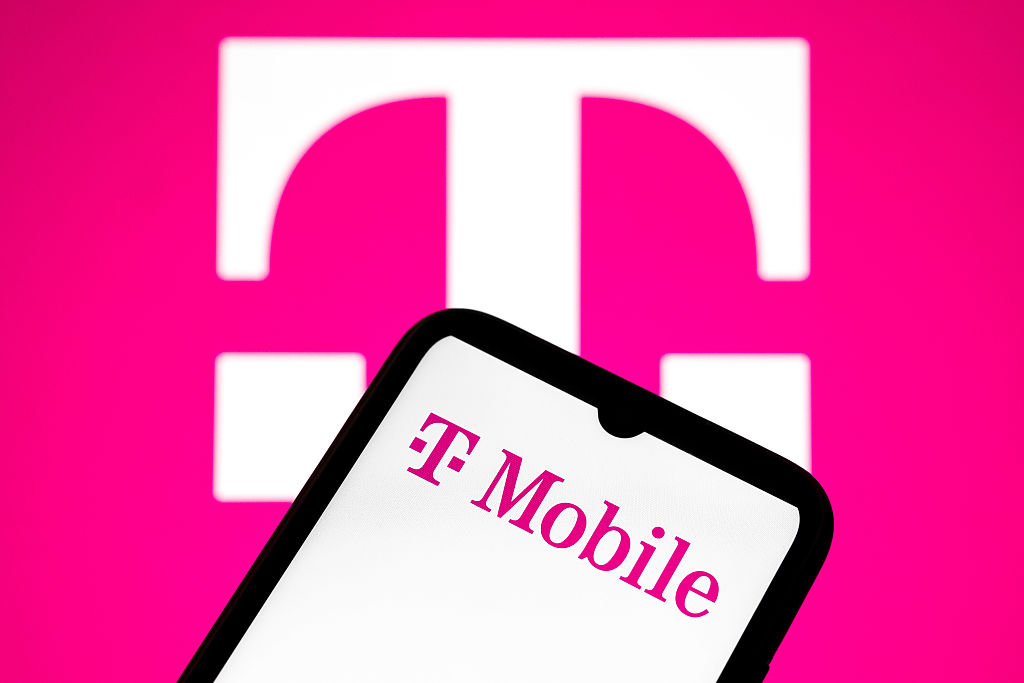A Financial Adviser Shops for Her Own Disability Insurance
Follow along to learn about the decision-making process for how much and what kind of coverage you might need for yourself.


As a financial planner, I spend a great deal of my time helping my clients plan for unexpected events that might affect their financial well-being.
Recently, I found myself facing a similar situation. After years of hampered mobility, I finally decided to have arthroscopic hip surgery. I had to take three weeks off from work, and I’ve only recently been able to drive again.
Before I went in for surgery, I took a closer look at my firm’s group long-term disability insurance benefits as well. Just in case something went wrong.
From just $107.88 $24.99 for Kiplinger Personal Finance
Become a smarter, better informed investor. Subscribe from just $107.88 $24.99, plus get up to 4 Special Issues

Sign up for Kiplinger’s Free Newsletters
Profit and prosper with the best of expert advice on investing, taxes, retirement, personal finance and more - straight to your e-mail.
Profit and prosper with the best of expert advice - straight to your e-mail.
I’m glad I did, because I discovered that this insurance only covers 60% of my base salary, which is typical of many group plans. Very few of these plans also cover incentive compensation, such as bonuses.
Fortunately, the surgery went fine, and I didn’t need long-term disability benefits — this time. But what if things hadn’t gone so well? What if it took me a year or more to fully recover from my surgery? What if I were diagnosed with cancer or another chronic illness and could no longer work? What if I could no longer get around on my own?
Receiving 60% of my monthly income from my employer’s plan wouldn’t cover my family’s living expenses. And I’d probably have more bills to pay for medical expenses, grocery deliveries and ride-sharing services like Lyft or Uber. The prospect of facing these added expenses while receiving only a fraction of my income in benefits was chilling.
And these aren’t irrational fears. One in four workers 20 or older will become fully or partially disabled at one point in their career, according to the Council for Disability Awareness. That’s why I decided to look at supplemental long-term disability insurance (DI).
Additional Income when you need it most
DI is most useful and cost-effective when, in combination with your employer’s long-term disability insurance, it can replace most of your regular monthly income. And if your company doesn’t offer any kind of disability insurance or you’re self-employed, it may be the only thing standing between you and extreme financial hardship.
But, as I found out when conducting my research, DI can be expensive, costing anywhere between $1,000-$3,000 a year or more, depending on your age, physical condition and coverage requirements. That’s why I really needed to think about how it fit into my overall financial picture.
What about Social Security disability benefits?
You might think that Social Security will provide a safety net if you become permanently disabled. It is true that if you qualify, you may be able to receive Social Security Disability Insurance (SSDI) benefits until you reach your full retirement age, at which time benefits will switch over to Social Security retirement benefits. But you must have paid Social Security taxes in the past to be eligible. And the Social Security Administration has very strict eligibility requirements for SSDI benefits.
Your benefit payments probably won’t be enough to cover all of your expenses, and if you earn over a certain amount of money per month your payments may be suspended or terminated.
My DI voyage of discovery: The steps I took
Since I am a financial planning professional, I have a great deal of experience conducting cost/benefit analyses of different asset protection options for my clients. Now it was time to do it for myself.
Compare monthly income needs to disability insurance payments
I started by estimating how much monthly income I would need at various stages of my life if a physical disability forced me to stop working for an extended period. I included medical expenses and other support services in my calculations.
With this dollar amount in hand, it was time to see where disability insurance might fill in the gaps.
As I mentioned, my company’s long-term disability insurance plan covers 60% of my base salary. But because those benefits are taxable, their actual value is less. So, my own separate DI policy would have to make up the difference. Fortunately, when you purchase this insurance on your own the benefits you receive are generally not taxable.
This made it relatively easy to calculate the monthly DI payments I would need to make ends meet. I simply subtracted the income I’d receive every month from my company’s plan from the total monthly income I would need. This dollar difference was the monthly amount I’d want DI to cover.
Finalize the coverage length
Next, it was time to decide how many years of benefits payments I’d need if I became permanently disabled. Many DI policies start with payment periods ranging from two to five years, but you can extend the period as long as you want.
Of course, the longer the payment period, the more expensive the premiums will be. But I really love my job. If I couldn’t do it anymore, I’d want to be compensated for all the time I’d miss, so I decided to go for the maximum.
I’m in my 40s and would want to the payment period to last until I retired at age 67. In a worst-case scenario, I’d get around 20 or so years of payments. If I never made a claim, I would be paying premiums for two decades. This may seem excessive, but is it really? My term life insurance policy covers the same period. At least with DI I’d get the financial benefits while I was still alive.
Consider additional features
Now that I had decided the coverage amount and the length of the benefits period, it was time to look at some of the features that can affect its cost.
Waiting period
Typically, long-term disability benefits kick in within a certain period after short-term disability benefits expire, typically 90 days. Insurers generally charge less for longer waiting periods. I decided on a six-month waiting period, figuring that, in a worst case-scenario, I could use money in my emergency fund during this time. For me, it was worth taking this risk in exchange for significant savings in premiums over the life of the policy.
Payout restrictions
DI carriers may offer several kinds of policies and riders that affect payment flexibility.
- Own-occupation is the type of coverage that most people choose. These policies pay benefits when you’re no longer able to work in your current (or most recent) role. You’re covered even if you’re able to work in a less-demanding role. In some cases, you can work and receive these benefits at the same time.
- Any-occupation insurance requires you to be totally disabled and unable to work at all before the insurer will pay benefits. If you can still work in some capacity—even in a job that pays less and is professionally unfulfilling—the insurer may deny benefits.
- Residual disability This is an additional rider you can choose that will pay you benefits even if you’re only partially disabled and can still work. This can be a good thing to add because relatively few people end up fully disabled.
Own-occupation policies are more expensive. But for me, there was no alternative. If a disability ever forced me to stop being a financial adviser, I’d want to receive compensation for the time I’d miss.
Get a quote on the package
Now that I have a basic idea of the coverage amount and length and payment options, I’m in the process of getting quotes from highly rated DI carriers. These are ballpark estimates, since when I finally apply I’ll have to give them my medical history and take an insurance physical exam.
Now it's your turn: Find a guide for your own DI journey
I feel fortunate that my experience as a CFP® professional enabled me to do a great deal of up-front planning on my own. But, given the complexity of the product, I’d recommend that most people speak with a qualified financial planner to project their cash-flows during various disability periods and estimate their DI coverage needs before they start contacting insurance providers.
Profit and prosper with the best of Kiplinger's advice on investing, taxes, retirement, personal finance and much more. Delivered daily. Enter your email in the box and click Sign Me Up.

Joelle Spear, CFP® is a financial adviser and a partner at Canby Financial Advisors in Framingham, Mass. She has an MBA with a finance concentration from Bentley University.
Securities and advisory services offered through Commonwealth Financial Network®, Member FINRA/SIPC, a Registered Investment Adviser.
-
 The Retirement Donor's Checklist: Key Deadlines by Gift Type
The Retirement Donor's Checklist: Key Deadlines by Gift TypeRetirees have some charitable contribution options that can help avoid spikes in income from RMDS and capital gains.
-
 Cooler Inflation Supports a Relief Rally: Stock Market Today
Cooler Inflation Supports a Relief Rally: Stock Market TodayInvestors, traders and speculators welcome much-better-than-hoped-for core CPI data on top of optimism-renewing AI earnings.
-
 Are T-Mobile's Prepaid Perks a Home Run or a Strikeout?
Are T-Mobile's Prepaid Perks a Home Run or a Strikeout?T-Mobile's prepaid lineup promises MLB.TV, T-Mobile Tuesdays and hotspot data. But do the perks make it worth switching?
-
 5 Smart Things to Do With Your Year-End Bonus, From a Financial Professional
5 Smart Things to Do With Your Year-End Bonus, From a Financial ProfessionalAfter you indulge your urge to splurge on a treat, consider doing adult things with the extra cash, like paying down debt, but also setting up a "fun fund."
-
 Are You a Gen X Investor? Here's How You Can Protect Your Portfolio From an AI Bubble
Are You a Gen X Investor? Here's How You Can Protect Your Portfolio From an AI BubbleAmid talk of an AI bubble, what's the best course of action for investors in their 50s and 60s, whose retirement savings are at risk from major market declines?
-
 Hey, Retirees: Put Your Charitable Gifts in a Donor-Advised Fund (and Enjoy Your Tax Break)
Hey, Retirees: Put Your Charitable Gifts in a Donor-Advised Fund (and Enjoy Your Tax Break)A donor-advised fund is a simple (really!), tax-smart strategy that lets you contribute a large, tax-deductible gift now and then distribute grants over time.
-
 If You're a U.S. Retiree Living in Portugal, Your Tax Plan Needs a Post-NHR Strategy ASAP
If You're a U.S. Retiree Living in Portugal, Your Tax Plan Needs a Post-NHR Strategy ASAPWhen your 10-year Non-Habitual Resident tax break ends, you could see your tax rate soar. Take steps to plan for this change well before the NHR window closes.
-
 Your Year-End Tax and Estate Planning Review Just Got Urgent
Your Year-End Tax and Estate Planning Review Just Got UrgentChanging tax rules and falling interest rates mean financial planning is more important than ever as 2025 ends. There's still time to make these five key moves.
-
 What Makes This Business So Successful? We Find Out From the Founder's Kids
What Makes This Business So Successful? We Find Out From the Founder's KidsThe children of Morgan Clayton share how their father's wisdom, life experience and caring nature have turned their family business into a respected powerhouse.
-
 I'm a Financial Adviser: The Fed's Rate Cuts Could Have Impacts You Might Not Anticipate
I'm a Financial Adviser: The Fed's Rate Cuts Could Have Impacts You Might Not AnticipateUnderstanding how lower interest rates could impact your wallet can help you determine the right financial moves to make.
-
 Past Performance Is Not Indicative of Your Financial Adviser's Expertise
Past Performance Is Not Indicative of Your Financial Adviser's ExpertiseMany people find a financial adviser by searching online or asking for referrals from friends or family. This can actually end up costing you big-time.